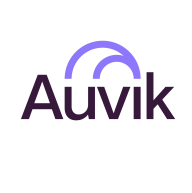

Microsoft System Center and Auvik Network Management compete in the IT management software category. Based on the data, Microsoft System Center might have the upper hand in environments heavily integrated with other Microsoft products and tasks like patch management, while Auvik stands out for ease of use in network-focused applications.
Features: Microsoft System Center emphasizes integration with Microsoft products, offers efficient automation, and provides robust OS control. Auvik focuses on ease of use, providing real-time network mapping, remote access, and configuration management.
Room for Improvement: Microsoft System Center can struggle with the integration of non-Microsoft products and has complex deployment. Auvik can improve its reporting systems, customization functionalities, and map visualization.
Ease of Deployment and Customer Service: Microsoft System Center requires on-premises deployment, presenting variability in support. Auvik, with a cloud focus, offers a straightforward setup but needs to enhance customer support.
Pricing and ROI: Microsoft System Center is known for higher costs due to licensing, offering ROI through automation. Auvik has competitive device-based pricing, providing ROI through time savings but potentially costlier with expanded monitoring.
Auvik Network Management has definitely helped reduce business disruptions related to network issues.
Auvik Network Management saves me 40% to 50% of our time.
If the network goes down, Auvik Network Management (ANM) opens a ticket, and then we begin working on it.
They were knowledgeable and responded quickly with accurate and useful information.
They introduced the product to us and explained how to deal with it.
I would give Auvik Network Management support a ten out of ten.
As a partner, I cannot create a ticket directly; I have to involve the end user's email to create one, so using the Software Assurance ID to create a ticket directly is not possible, making it very challenging for me.
The platform scales well and supports our organizational needs.
It was capable of handling all those clients perfectly.
We keep adding sites into Auvik Network Management, and it doesn't seem to affect performance or anything on our end.
Microsoft System Center is scalable, allowing integration even if I have different sites.
A lot of platforms, especially when it comes to CRMs, CMSs, and ERPs, are still built on PHP and MySQL, which I feel is archaic now and slow to query.
In terms of stability, I would rate Auvik Network Management as a ten out of ten, as it does not experience jitter or other major issues.
Auvik's automated reporting system also details interferences or any lagging other than outside interference from electrical sources.
We were unable to integrate Auvik with a geographical map, which limited our ability to track issues to specific buildings on campus.
Enhancements in API functionality and wider tool support for integration with PSA or RMM tools.
Auvik does a good job of nesting those devices. For example, a bunch of different servers will all be nested in one icon on the map, and when opened up, all those multiple servers can be seen.
The disadvantage of Microsoft System Center is related to the many integrated services; if one service is failing, then all features will be affected.
Auvik is pricey, and we were paying a lot for it, especially when compared to SolarWinds.
The pricing for Auvik Network Management (ANM) is great; it is comparable to other solutions, and for what it does, it actually provides more value for the money than some of the other major competitors.
Auvik Network Management (ANM) pricing or licensing is about 2,500 per year for approximately 4,000 endpoints, which is quite reasonable.
Auvik Core's ease of use also enhanced troubleshooting speed and efficiency.
Its proactive monitoring and simplified troubleshooting have significantly impacted our efficiency in handling network management tasks.
We can go to different places and monitor, check, configure, and analyze traffic.
In Microsoft System Center, all the features are integrated already, whereas in ManageEngine, you have to license each feature individually to access those features.
| Product | Market Share (%) |
|---|---|
| Auvik Network Management (ANM) | 1.1% |
| Microsoft System Center | 0.4% |
| Other | 98.5% |


| Company Size | Count |
|---|---|
| Small Business | 140 |
| Midsize Enterprise | 31 |
| Large Enterprise | 21 |
| Company Size | Count |
|---|---|
| Small Business | 7 |
| Midsize Enterprise | 4 |
| Large Enterprise | 10 |
Auvik Network Management provides comprehensive network monitoring with competitive pricing, offering advanced features and free management of non-critical devices.
Auvik Network Management is known for its intuitive interface and real-time network visibility. Users benefit from features like automated network discovery, mapping, alerting, and TrafficInsights for cost-effective bandwidth monitoring. Its integration with ConnectWise and ticketing systems enhances device inventory updates, SNMP monitoring, and network troubleshooting. However, improvements are needed in reporting, integration capabilities, network map accuracy, customization, and alert configuration. Users suggest expanding device support and improving navigation and monitoring features.
What are Auvik's most important features?Auvik Network Management is widely used by managed service providers and enterprises for network monitoring across industries. It enables efficient management of firewalls, switches, routers, and ensures connectivity over multiple locations. This solution aids in identifying issues, automating backups, and facilitating remote access, offering critical insights on network traffic and device performance. Companies leverage its features to enhance network management and performance.
We monitor all Cloud Monitoring Software reviews to prevent fraudulent reviews and keep review quality high. We do not post reviews by company employees or direct competitors. We validate each review for authenticity via cross-reference with LinkedIn, and personal follow-up with the reviewer when necessary.